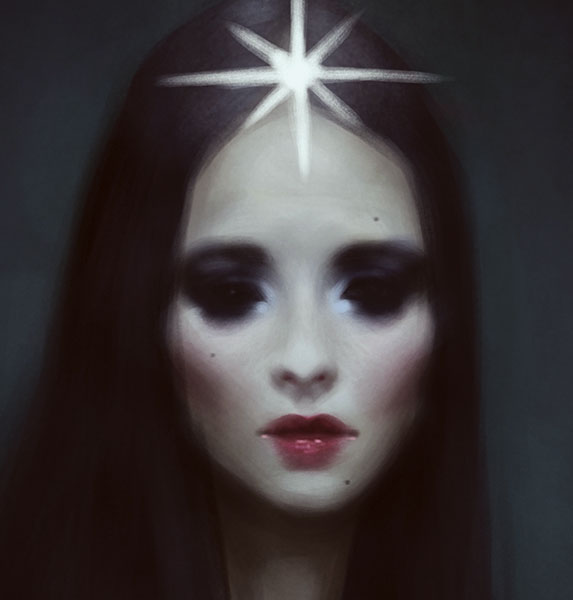15 fantasy portrait tips
Learn how to achieve realistic fantasy portrait paintings that stand out from the crowd.
09. Give lips texture

Lips are an important facial feature. They can draw attention as much as the eyes do, and help the character to express emotion. To get them right it's just a matter of texture.
Lips aren't a flat, plain element: I paint the little wrinkles with a very thin brush, which gives them texture and a lot of volume. Indeed, volume is the key to bring life to the lips, so I always add some intense dots of light to make them more realistic and attract even more attention.
10. Add new focal points to profile portraits

Developing a character's profile is tricky because there's no eye contact to play with and only half of the face to show. I use light and contrast to compensate for the lack of interaction with the character, and enhance the costume design to hold the viewer's attention. Here, the figure's hair does almost everything: it defines her head shape and contrasts well with the bright, empty background.
11. Play with light and saturation in the eyes

The eyes are usually the main part of a portrait, and are my favourite element. They can look sad, sparkling, mysterious or dangerous… and done well, can bring any character to life. I like to give them a lot of intensity with unusual colours such as purple or yellow.
The trick to make them stand out is to play with the light and saturation. I use a precise brush to create some colours variations in the eye and finish it a bright dot of light that will give volume to the eyeball.
12. Tell a story

A portrait leaves very little space to tell a story, so the general style of the character is important and can give a lot of indications and information about their life. I try to pay special care to their clothing, even if the viewer can only see a small part of it. I also spend time on their hair and details like a crown, to give the maximum amount of visual information. Their story can also be told by elements on the skin, like a tattoo, a scar or tribal markings.
13. Explore interesting lighting

The light is crucial in a portrait. If you get this right, it adds to the atmosphere of the piece, and brings life and volume to the face. I always start a portrait with neutral mid-tones and gradually add shadows and light. I love to accentuate the light in a chiaroscuro style; I think it brings a classic feeling to my fantasy theme. However, I keep my shadows very soft, and my gradients are usually very smoothed, because the face is made of curves and not sharp angles.
Daily design news, reviews, how-tos and more, as picked by the editors.
14. Add flaws to your skin

The skin is obviously an important element in a portrait painting, and a common mistake is to make it look flawless. It's relatively simple to paint clean, soft-looking skin, but if you're not careful your character will end up looking like a plastic doll, and besides, nobody has perfect skin.
To avoid this, I start with a textured base and use a soft brush with a little grain texture to recreate the skin's irregularities. I also add some dots of light to create pores, particularly on the nose and around the eyes.
15. Play with contrast

Another trick that works very well is to add contrast to the composition. I achieve this by adjusting the lighting, playing with complementary colours, or using warm and cold hues. The trick is to separate the character from the background. My favourite approach is to use a very dark background and an unusual light source to illuminate the character. The light captures the viewer's initial attention, who then moves on to my character portrait.
This article originally appeared in ImagineFX issue 138; buy it here!
Read more:

Mélanie is a freelance illustrator who specialises in fantasy. She is a digital painting instructor at CGMA.
